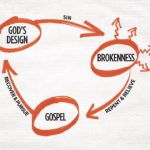The Deconversion of Paul Maxwell
I listened to Anthony Bradley’s recent interview of Paul Maxwell with fascination and apprehension. I knew little about Maxwell prior to listening, and the interview proved intriguing. Maxwell had gone from an intellectually robust and thoughtful proponent of Reformed Christianity to an intellectually robust and thoughtful atheist.
And his biography mirrors my own. We were born in the same area of the country a year apart, both became interested in philosophy as a means to power in college, both devoured Van Tillian presuppositionalism, both attended a Westminster school (Redeemer Seminary, in my case) following the Pete Enns debacle, and both left the seminary having been burned by the community. I normally find deconversion narratives personally uncompelling since there is typically dogmatic distance between myself and the other person prior to their deconversion.
Not so with Maxwell. It was like watching a martial artist and realizing that not only did he train at the same dojo as me, he wears a more advanced belt. Usually the motivations and methods of deconversions aren’t capable of landing a blow on me, but Maxwell could not only penetrate my objections, but could anticipate my best counter-attacks. Maxwell is clearly much smarter and more educated than me…
Church Life, Health, and Mission in the EPC’s Presbytery of the East
I’ve drafted a white paper as a proposal to guide a presbyterially strategized, congregationally executed approach to church health. It is tailored to the EPC’s Presbytery of the East, where I am and the congregation I pastor are members. But the principles apply to any connectional denomination. David Brooks recently in The New York Times highlighted Tim Keller’s 8-point plan for Christian renewal in the United States. Jake Meador today drew out some of the implications of this plan for institution building. That is what this paper I drafted is trying to capture: a fresh, rooted, and aggressive approach to concrete institution building oriented by the church as God’s institution for mission.
The paper can be found here. Below is an excerpt of the first section.
Church Life
The church receives its life from Jesus. The church is united to him spiritually and mystically, and receives its life from him. He is the vine, we are the branches. No approach to church health, revitalization (i.e. literally “re-lifeing”), or mission can proceed biblically without this reality foregrounded.
Churches are alive and healthy insofar as they truly united to Christ and practicing the means by which that union is deepened. Any conversation about church life cycles, budgeting practices, change management, congregational outreach, effective small groups, etc. is all tertiary to the redemptive work of God in Christ and the means by which the church receives those benefits.
Assuming this or backgrounding it in conversations about church health and mission only results in unhealthy churches and mission unaligned with God…
(Untitled)

By a coincidental providence, tomorrow, on the high holy day of American sports, I am preaching on God’s blessing of the Sabbath day.
Thoughts on Descending Overture 21-D
One of the byproducts of Presbyterianism is that if you find yourself in a minority position on a constitutional amendment you have the distinct unpleasantness of being on the losing side of a vote three times in a single year. But three votes is three votes, not two votes, so though I have already been on the minority side on two votes on Descending Overture 21-D, it is not bad churchmanship to again make the case to decline its ratification. Presbyterian decision making is about process and persuasion, after all…

A Review of “Three Circles”
Turning Everyday Conversations into Gospel Conversations (Three Circles) by Jimmy Scroggins and Steve Wright has become a favorite evangelistic tool in Baptist circles. The North American Mission Board (the domestic mission arm of the Southern Baptist Convention) has adopted it and even created a companion website and app.
Scroggins and Wright are motivated to share the gospel with as many people as possible, and to equip the people of the church to this. A laudable motivation, to be sure. Thy are driven by a desire to see a multiplying church, especially in their unchurched South Florida context.
Now, a word needs to be said about whether South Florida (the authors are in West Palm Beach) is unchurched. They assert that 96% of the 1.4 million people in Florida are unreached and that West Palm Beach is an unreached city (pg. 17), something that is repeated regularly throughout the book. This, to put it bluntly, is inaccurate. The 96% unreached number comes from NAMB, which provides no data to back up their claim. Yes, the cited 2015 Barna data says that West Palm Beach is the city with the highest percentage of “never-churched” people in the United States (17%), but that means 83% of West Palm Beach has been churched at one time. That very same Barna report states that West Palm Beach is currently 52% churched, 48% unchurched, the 11th least-churched city in the country, but hardly unchurched or unreached. The Association of Religious Data states that in 2010 (most recent year for their data) Palm Beach County had a rate of 36.6% regular attending Christian adherents, with 10.9% of the population regularly attending an Evangelical Protestant church. No matter how you massage the numbers, South Florida is not unreached. That does not mean that sharing the gospel should be a lower priority, but that does mean Scroggins and Wright made me skeptical of their work. Misleading the reader on one point, intentionally or through unintentional sloppiness, means you’re untrustworthy on the others. When so much of the book’s argument is validated by the alleged effectiveness of the tool in converting the unreached, but it turns out the number of unreached is inaccurate, it calls into question the effectiveness of the tool and validity of the book’s argument…
